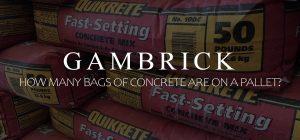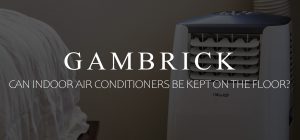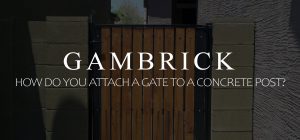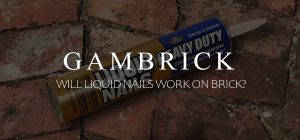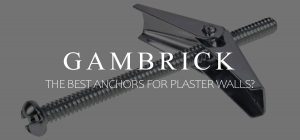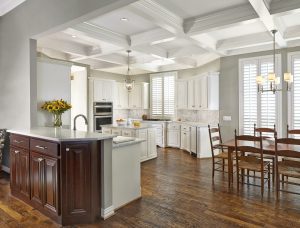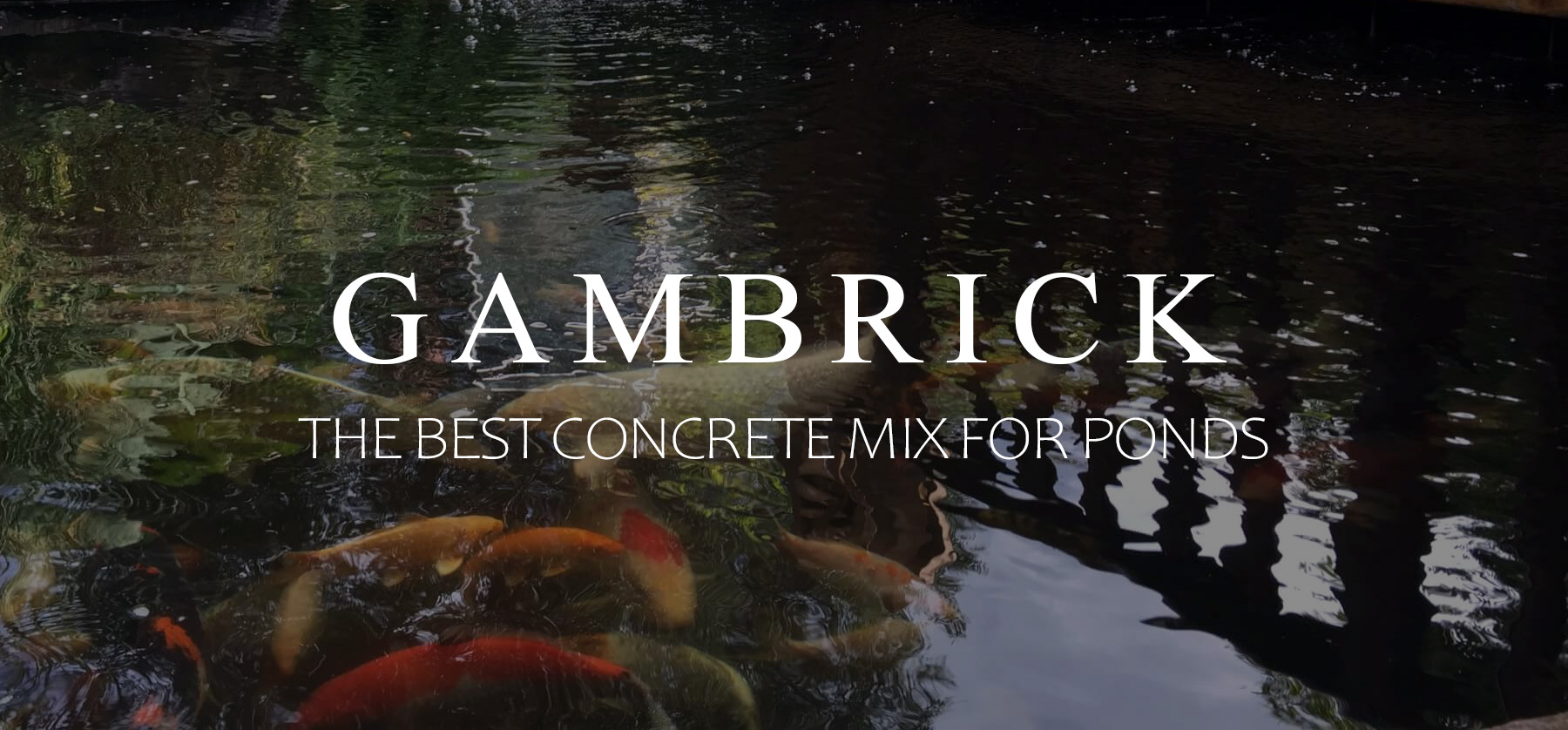
The Best Concrete Mix For Ponds
The best concrete mix for ponds depends on what kind you’re building. For a below ground pond you can use 3000 psi concrete for the foundation, walls and floor. Soil helps support the water pressure so you can use a regular strength concrete mix. But for an above ground raised pond you need a stronger 4000+ psi concrete mix for the walls and a standard 3000 psi mix for the floor and foundation.
I’ve been a mason for over 25 years and can tell your firsthand that your concrete mixture for a pond needs to be strong or it will crack and leak. Ponds are built in a variety of ways and are often finished with elaborate waterfalls, plants, trees and rocks. But they’re essentially just a big fish tank with a drain, pump, filters and aeration system. Most Koi Ponds have a depth of 4′-6′ feet.
The concrete used to build a pond should be reinforced with fiber, wire mesh and steel rebar. Ponds are like a big swimming pool that can hold hundreds if not thousands of gallons of water. All that water creates pressure against the pond walls, floor and foundation. To prevent cracks, the pond needs to be built strong.
Use rebar reinforcement and some wire mesh inside the pond’s floors, walls and foundation. Rebar strengthens concrete and holds the structure together.
Ready-mix concrete delivered by a truck is great for large ponds. But for smaller fish ponds I use bagged concrete like Quikrete or mix my own.
Make sure to use at least a 3000 to 4000 psi concrete for pond building. The mixture is much stronger than what you’d use for pouring stepping stones or setting fence posts.
Understanding Pond Concrete
All concrete is a mixture of cement, sand and stone mixed with water. There’s no special concrete that’s used for building ponds. It’s the same material used to build foundation walls, footings, driveways, patios and sidewalks.
Concrete mixes used to build a pond should be at least 3000 psi for floors, foundations and below grade walls. For pond walls above grade use a 4000+ psi mix.
Because concrete is a composite material made by mixing several ingredients together, you can alter its properties and strength by adjusting the ingredients and their ratios. This important because some concrete mixes are better for pond building than others.
Portland cement is hydraulic which means it hardens and cures when mixed with water. This is the active ingredient in concrete. When cement mixes with water it becomes a paste which then dries, hardens and grows strong during a process called curing which takes around 28 days to complete.
The right amount of water is critical when mixing concrete. Too little won’t activate all the cement which leaves it dry and brittle. But use too much and the concrete will be weak and prone to cracking.
Additives can be used along with stone, cement and sand to give concrete additional properties like more strength, flexibility and crack resistance. I recommend adding fiber reinforcement to the concrete because it adds some strength and crack resistance.
Concrete Pond Floors, Walls & Foundation
Concrete has very high compressive strength which means it can carry a lot of weight without breaking. But it has low tensile strength so it breaks easily when bent, shaken, stretched or twisted. Because of this, concrete ponds must be built a strong foundation and sub-base.
In colder climes footings must be built below the frost line to avoid movement during freeze-thaw cycles. This is usually 3 feet below grade.
The first thing we do when building a new pond is excavation. Soil is removed and forms are built to shape the footings and floor slab. Typically we pour the footings and pond floor at once which connects them creating one giant slab of concrete. This is called a monolithic pour.
If the pond walls are built with concrete blocks, the blocks are stacked on top of the slab and footings. But if the walls are also solid concrete, forms are built and then the concrete is poured.
Inside the pond’s floor, walls and footings are rebar. We also use some wire mesh inside the slab floor.
Vertical rebar is installed from the footing into the pond walls. Then horizontal rebar are run through the footings, the slab and the walls. This ties the entire structure together making the pond extremely strong and hard to crack.
Additional reinforcement like fiber is also used inside the concrete mix to add more strength and crack resistance.
The Best Fish Pond Concrete Mix
There’s no such thing as a concrete mix that’s just for ponds. Concrete is a mixture of sand, aggregate stone and cement. Varying these ratios produces different types and strength concrete. But it’s still just concrete.
The reason some concrete formulas work better than others for pond building is due to how the pond is built and then used. A pond holds a lot of water so you need concrete that’s both strong and crack resistant.
Most ponds are outside so they could see rain, intense sun, snow, ice, temperature fluctuations and possibly a freeze/thaw cycle. A pond needs to be strong enough to hold lots of water weight while resisting cracks due to other stresses like weather and/or movement in the soil.
When buying concrete for your pond you have a few options:
- Truck: Ready-mix concrete delivered by a truck is more expensive but it saves time and labor. The company can tailor the mixture to whatever you need including adding fiber reinforcement. I use ready-mix for building larger ponds.
- On Site: Mixing your own concrete is the cheapest option but its a lot of work. However when you mix your own concrete you have total control over what goes into the mixture and the ingredient ratios. It’s a good option for medium sized ponds or if you need special concrete.
- Quikrete: I like using bagged concrete for smaller ponds. If a job is under or around 50 bags (one pallet) I’ll usually use it.
No matter where you buy your concrete, the mix you want for a pond is at least 3000 psi for the floor and below grade walls and 4000+ psi for above grade walls. Add in some fiber reinforcement to prevent cracks. And use rebar inside the concrete.
How Thick Does Concrete Need To Be For A Pond?
Concrete for a pond needs to be between 4 to 8 inches thick. The slab floor is usually 6 inches thick with a drain. Rebar and wire mesh are used inside the floor slab to prevent cracks.
- If the walls of the pond are below grade they’re usually 4 inches thick with vertical and horizontal rebar.
- If the walls are above grade I pour them 8 inches thick with both vertical and horizontal rebar. The extra thickness is important because above ground raised ponds don’t have soil to help retain water pressure.
For really large raised ponds you can increase the thickness of the walls in relation to the pods size. The bigger and higher the pond the more water pressure the walls will have to bear. I recommend consulting an engineer if your raised pond walls are over 1 foot high.
It’s usually unnecessary to go thicker than 6 inches for the floor slab. The floor of the pond rests on compacted soil so as long as the soil remains solid the floor shouldn’t crack.
Add some fiber reinforcement to the wet concrete before you pour. It strengthens the concrete and helps prevent cracks.
Is Concrete Safe For Ponds?
Concrete is a fantastic building material that’s strong enough for a pond. But is it safe for the fish?
Most fish ponds use concrete to build the structure. It’s great for pond walls, the foundation and floor because it’s very strong and durable. But it’s not usually used as a finish material that comes in contact with water. In most cases ponds are sealed with a thin waterproof membrane, cement, stone, tile, brick, etc. Some finish material usually sits between the concrete and water. But not always.
The cement used to make concrete contains lime. When ponds use concrete as a finishing material they leach lime into the water which is harmful to fish and plants. In order to make concrete ponds safe for fish and plants you have to cure it first. Curing removes lime which is harmful to fish and plants.
Here are the steps you need to follow:
Step 1
Mix one gallon of muriatic acid to four gallons of water. Using a medium hard bristle brush, scrub the entire pond. The concrete may bubble as the lime works free. Don’t worry, this will not harm the pond. Mix more solution as needed. Be sure to clean every surface of the pond. Even areas concrete areas that are not filled with water because when it rains water can drain lime into the pool. Rinse the pond thoroughly, drain and refill.
Step 2
Make sure the pond is filled with water. Then mix in one gallon of white household vinegar for each 200 gallons of water. Let the solution sit in your pond for three – five days. Empty and rinse the entire pond thoroughly to remove all the excess lime and vinegar from the walls. Finally fill the pond again with clean water. Any lime you missed with the acid wash will be rinsed away by the vinegar.
Do I Have To Seal A Concrete Pond?
A concrete pond should be sealed and made water tight. They’re basically a pool that holds fish so they shouldn’t leak.
Concrete is a porous material which absorbs water. If the walls aren’t sealed, water can leach through the walls and floor. To build a water tight concrete pond you should seal it using a few different methods which include a waterproof membrane, rubber based pool paints and liners.
Once the pool is water tight you can use materials like wood, tile, stone, bricks or more concrete to finish the walls.
Concrete contains lime and other chemicals which can leach into your pond unless you either seal it, cure it or both.
I recommend sealing a concrete pond to keep it water tight. Then I would cure any concrete or cement areas that come in direct contact with the water or where runoff from concrete or cement could feed into the pond.
Curing and waterproofing are different processes. Curing removes excess lime from concrete or cement. This makes the material safer for pond use. Waterproofing seals the pond so water can’t leach out of or into the pond.
Its best to both seal and cure a pool containing concrete and/or cement.
Concrete pools can be sealed with a waterproofing membrane, rubber based pool paint or a heavy-gauge polythene sheet.
How To Seal A Concrete Pond With Paint
To seal a concrete pond with paint it must first be etched. This allows the paint to penetrate into the surface which prevents it from peeling off. To etch the pond, fill it with water and add one gallon of household white vinegar for every 200 gallons of water. This is the same basic process as curing the concrete.
If you’ve already cured the concrete you do not have to etch it. Curing does the same job as etching.
Allow the vinegar to sit in the pond for 3-5 days. Drain the pond and allow to dry fully. Paint the concrete with a rubber based pool paint. Do not dilute or thin the paint. Allow the paint to dry for 7-10 days and then rinse the pool.
How To Seal A Concrete Pond With A Liner
After you excavate the hole for your pond, a heavy-gauge polythene sheet is installed into the hole against the dirt. This step is done before you start pouring concrete. Use a plastic liner that’s 0.75 mm (0.029 in) to 1.00 mm (0.039 in) thick. Cover the sides and base of the pond with the liner. Make sure there are no gaps or holes where water can leak out.
Concrete will eventually be poured on top of this liner to form the pond.
Liners are best for small to medium sized ponds with sloped walls. Liners are installed on the soil side of the pond.
How To Seal A Pond With A Waterproofing Membrane
A waterproofing membrane is a great way to seal a pond that’s large or has flat at a right angle to the ground. They’re installed after the concrete floor and walls are complete. The membrane attaches to the concrete walls and floor on the water side of the pond.
Because waterproofing membranes attach to the water side of the pond, they’re more effective than a liner. And they can be used along with a liner to seal both the inside and outside of the pond.
The waterproofing membranes used to seal a pond are the same exact products used to seal an in-ground pool.
How Do You Stop A Concrete Pond From Leaking?
If you have a solid concrete pond that’s leaking you need to plug the crack from the inside. This involves draining the pond and making repairs. If the crack is large, you’ll have to break away damaged areas first. Once all the brittle concrete is removed, coat the area with a bonding liquid. This is an important step because new concrete won’t stick to old concrete without the bonding agent. Once the bonding agent dries, apply fresh concrete to the area.
If the cracks are medium sized fill them with high strength mortar and not concrete. Concrete can’t be used to repair small cracks because it contains rocks which won’t fit into a smaller sized crack.
Another great product for repairing a leaking pond is hydraulic cement. It’s used to repair structural cracks in concrete foundation walls and footings.
If you want to repair a cracked and leaking pond without draining it first, use hydraulic cement. It’s also known as leak-stop or quick-set cement or mortar. Builders use it to stop leaks in concrete foundation walls and footing. its super strong, will bind with existing concrete and cures underwater. However I still recommend draining the pond before making repairs.
Can You Build A Koi Pond Out Of Concrete?
Concrete is a great material for building a Koi pond. it’s very strong, durable and resistant to the elements. And it’s a very versatile material that can be formed into any shape. But it has some flaws you need to deal with before you can add fish and plants to the pond.
Concrete contains cement which contains lime. Lime and other chemicals found in the concrete can leach into the water which harms the fish and plants. It’s very important to cure the concrete and/or cement before you add fish and plants. This involves a muriatic acid scrub and a vinegar bath. I’ve detailed how to do both above.
In addition to curing the concrete and/or cement, you have to seal and waterproof the pond. This prevents water from leaching out of or into the pond.
Most concrete ponds include a thin waterproofing membrane with a cement parge coat and/or another finishing material like stone, brick or more concrete. You can essentially finish the inside of a Koi pond with any water safe material on top of the waterproof membrane.
Koi ponds are generally built in layers which include the following:
- Structural concrete walls, foundation and floor.
- A waterproofing layer on top of the structural areas. This layer can be a thin membrane or waterproofing paints.
- A finishing material is applied over the waterproofing. This can be cement, more concrete, stone, brisk, wood, etc.
- A cap is usually installed over the walls.
- Finish materials on the outside if the Koi pond is raised.
Waterproofing a concrete Koi pond and curing it are important steps to follow to preserve the pond and protect the fish and plants.
Bad Concrete Mixes For A Pond
When buying or making a concrete mix for your pond, there are a few things you should try and avoid:
- Aggregate Size: If your mixing your own concrete make sure to choose the aggregate stone carefully. The stone should be 1/2″ to 1″ in diameter. Too small and the concrete will be weaker, too large and it’ll be harder to smooth out. This is especially important if you’re using the concrete as a finish.
- Aggregate Shape: Smooth stones are best. When you finish concrete, smooth stones will settle and drop below the surface which gives a better finish. You never want to see stone edges sticking up out of the slab. This can happen with oddly shaped or jagged stone.
- Strength: Make sure to buy or mix a concrete that’s at or over 3000 psi. This is strong enough for most pond floors and walls. But above grade raised pond areas need stronger concrete because there’s no soil to retain the water pressure. I use at least a 4000 psi mix.
- Lime: Avoid using concrete, cement or mortar products that contains lots of lime. Especially when masonry comes in direct contact with water or where there’s runoff.
Concrete ponds are usually built in layers. There are structural layers which include the foundation, floor and walls. And then there are finished layers which are built on top of the structure. These can include, stone, cement, tile, wood, brick or more concrete.
Make sure to choose the right concrete mix for the layer you’re working on.
Ponds In Cold Environments Need Stronger Concrete
The best concrete mix for ponds in a cold environment is at least 4000 psi. Cold climates can see temperature fluctuates, snow, ice and the freeze/thaw cycle. These changes put more stress on the concrete so it needs to be stronger. Especially if the water is allowed to freeze.
When pond water freezes it expands and pushes out against the pond walls. To resist this force, the concrete needs to be stronger and you need internal vertical and horizontal rebar. I use at least 3/8 inch rebar with 4000+ psi concrete.
If the ground freezes it pushes in on the pond walls and floor. To resist forces from this direction you need the same horizontal and vertical rebar with a strong 4000+ psi concrete.
Concrete is a porous material that absorbs water. When water inside the concrete freezes it creates a tremendous amount of pressure inside the concrete. This can cause cracks and spalling. But stronger concrete can withstand the force of freezing internal moisture which is why its so important in cold environments.
Then there’s expansion and contraction to consider. If you live in an area like New Jersey that sees hot summers and cold winters, the concrete will expand and contract every season. To prevent cracks, use a strong 4000+ concrete along with fiber reinforcement.
Use wire mesh along with rebar inside the pond floor to prevent cracks.
Summary: The Best Concrete Mix For Ponds
Fish ponds can be a great addition to your landscape design. They’re often referred to as Koi ponds because of the famous Japanese Koi. Ponds are built in a variety of ways and are often finished with elaborate waterfalls, plants, trees and rocks. But they’re essentially just a big fish tank with a drain, pump, filters and aeration system. Most Koi Ponds have a depth of 4′-6′ feet. However they can be built much deeper to house larger fish. The best concrete mix for ponds depends on what you’re building. For a below ground pond you can use 3000 psi concrete for the foundation, walls and floor. Soil helps support the water pressure so you can use a regular strength concrete. But for an above ground raised pond you need a stronger 4000+ psi concrete mix for the walls and a standard 3000 psi mix for the floor and foundation.
The concrete mix you use to build a pond should be reinforced. Ponds are like a big swimming pool that can hold hundreds if not thousands of gallons of water. All that water creates pressure against the pond walls, floor and foundation. To prevent cracks, the pond needs to be built strong. Add some fiber reinforcement into the wet concrete as you mix it. Fiber helps bind the concrete together and prevent cracks.
Use rebar reinforcement inside the pond’s floors, walls and foundation. Rebar strengthens concrete and holds the structure together. For even more strength inside the pond floor use some wire mesh.
Ready-mix concrete delivered by a truck is great for large ponds. But for smaller fish ponds I use bagged concrete like Quikrete or mix my own.
If you have any questions about concrete or ponds, email any time.

John Mazzuca | About | More Posts |
Custom Home Builder
John Mazzuca is a custom home designer and builder at Gambrick with over 25 years experience in the construction industry. John has designed, built and/or remodeled hundreds of homes, small buildings, and commercial projects. He writes about business, real estate, home building, and household electronics. His work has been featured in Fox Business, Better Homes & Garden, House Beautiful, and more.

